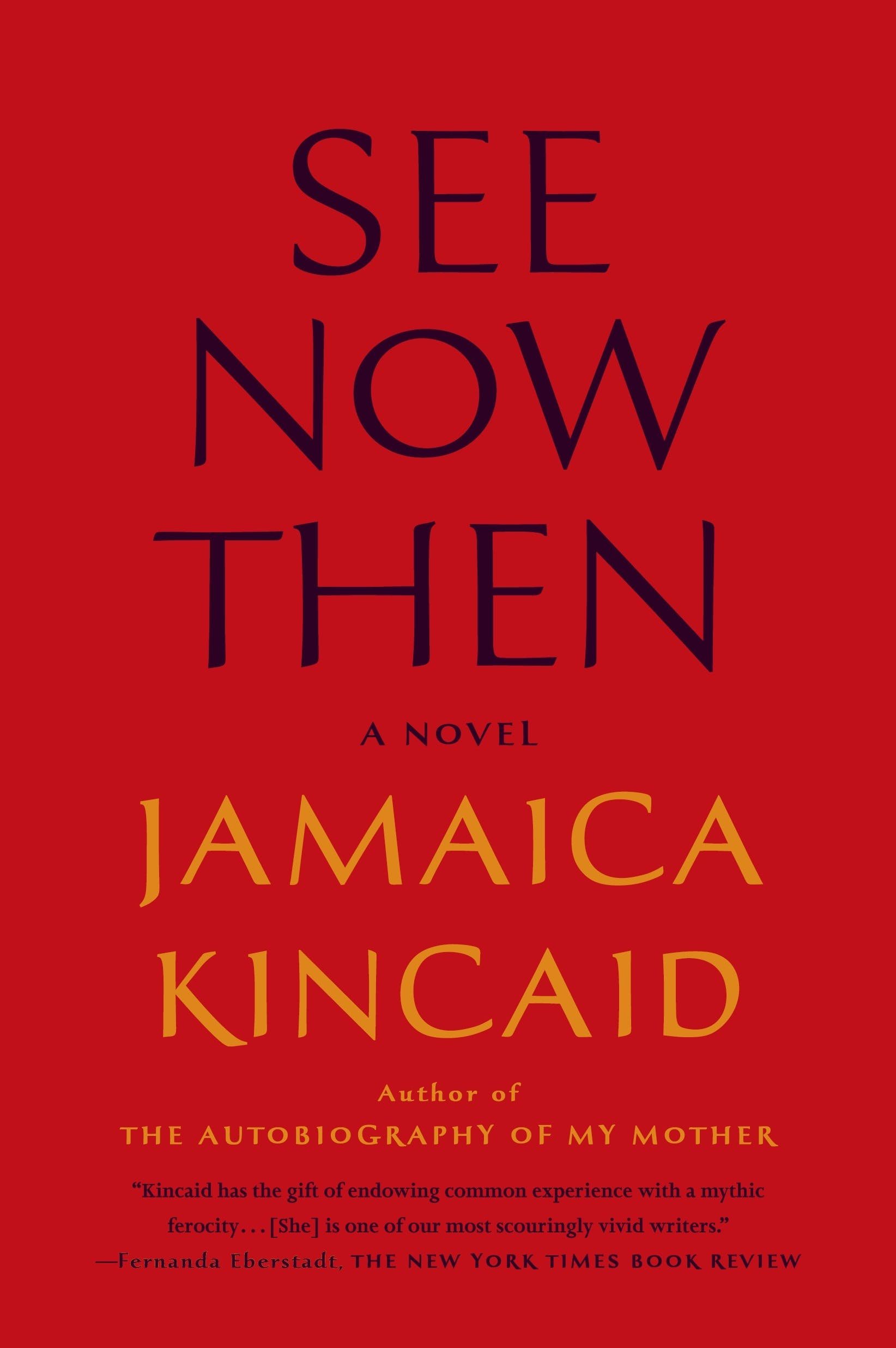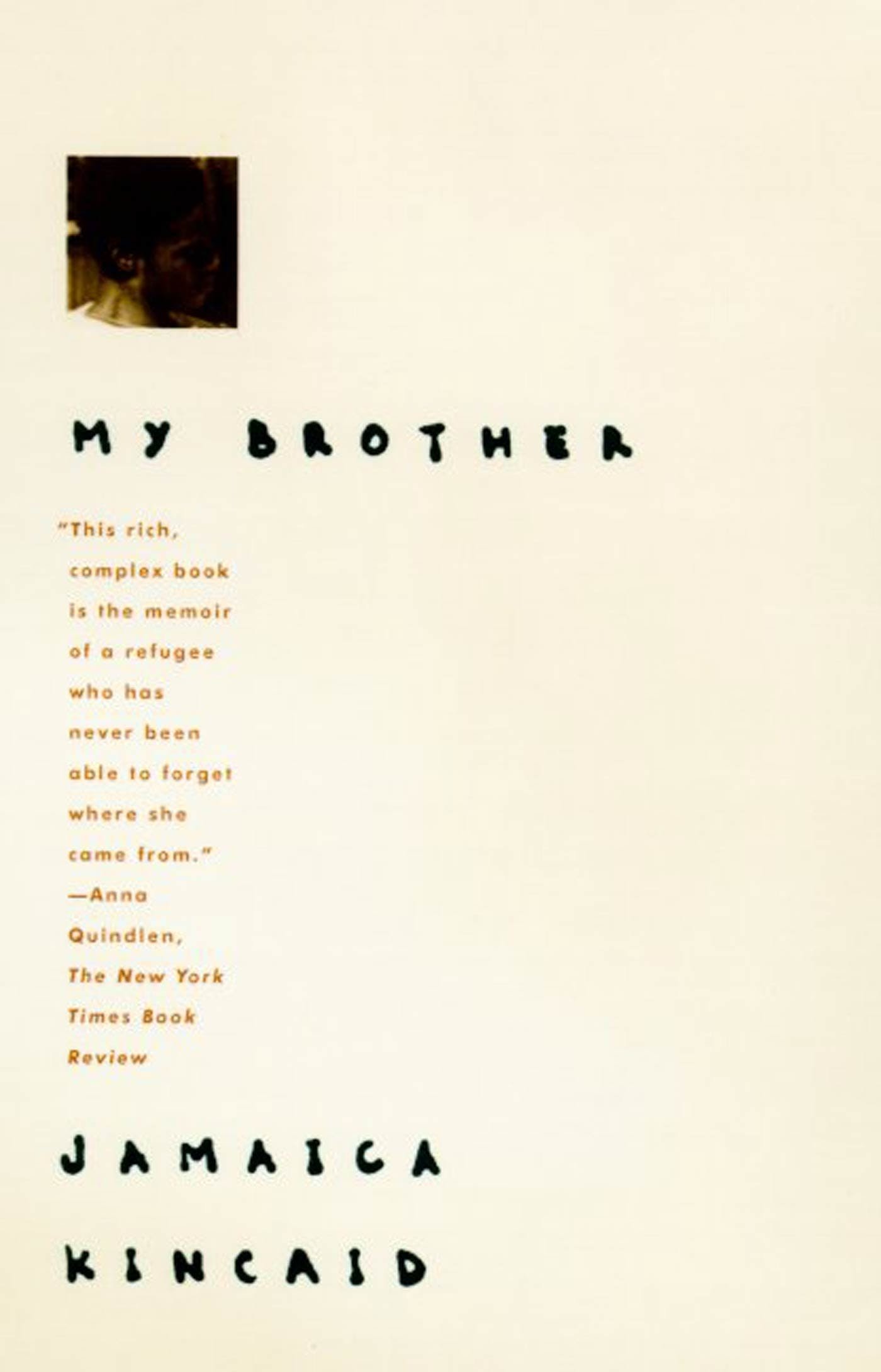See Now Then by Jamaica Kincaid
Jamaica Kincaid’s new novel might be the story of any failed marriage. Or it might be the story of the demise of Kincaid’s marriage to composer Allen Shawn, son of esteemed New Yorker editor William Shawn. The specifics certainly suggest it is based on their union: The setting, a farmhouse in a charming New England village. The characters: A razor-tongued black writer born in Antigua; her socially privileged white husband, a composer, small in stature and swimming in phobias; their daughter and son.
In any case, personal facts in Kincaid’s novels, including The Autobiography of My Mother, are mere material for her fiction. They tell us what happened, not what the story is about. Her latest novel concerns time — the fact that it never stands still — and the function of memory: How it feels to see now then.
This is Kincaid’s first novel since Mr. Potter in 2002. I was worried, actually, wondering where she was, until I learned, latterly, that she had been divorced. How surprising. In an oeuvre filled with blistering truths — about her painful relationship with her mother; about the impact of colonialism on the souls of Caribbean people; about her beloved garden, described as a product of that hard history — her family surfaces as an island of tenderness. Sweet scenes of contentment have stayed with me for years.
Here is one from My Brother, her account of her sibling’s struggle with AIDS:
“That Thursday night when I heard about my brother through the telephone, from a friend of my mother’s … I was in my house in Vermont, absorbed with the well-being of my children, absorbed with the well-being of my husband, absorbed with the well-being of myself.”
In My Garden (Book), she credits her husband with awakening her passion for plants:
“My attachment in adult life to the garden begins in this way: shortly after I became a mother for the first time, my husband gave me a hoe, a rake, a spade, a fork, some flower seeds to mark the occasion of that thing known as Mother’s Day.”
For our heroine, Mrs. Sweet, the garden presents one dilemma, motherhood another. Her husband and children resent her attachment to her plants. They resent even more her writing that takes place in a room off the kitchen. Perhaps it is natural that children despise whatever competes for their mother’s affection. Natural, too, that the union of two artists will produce jealous tensions, especially when the woman’s fame exceeds the man’s.
Mrs. Sweet adores their picturesque village, with its culture redolent of her native home, yet bereft of the intellectual glamour that characterizes New York and Paris, the cities of her husband’s happy youth.
The couple’s problems stretch back to the birth of their first child, referred to throughout as “the beautiful Persephone” even while Mr. Sweet teases his wife that she resembles actor Charles Laughton. He worries that Mrs. Sweet, who arrived in America via “banana boat” may prove a shabby role model for his lovely daughter.
Kincaid delineates a subtle, contemporary racism, repressed now publicly, but cropping up in the most intimate of spaces. Mr. Sweet adopts a distinct dislike for his son, Heracles, a restless, boisterous child who organizes noisy battles with the mythological action figures he collects from Happy Meals. Mr. Sweet feels diminished beside his growing son, this young black man, “whatever that means,” the narrator says.
In spite of all this, Mrs. Sweet is shocked when her husband confesses he is leaving her for another woman:
“I never loved you, you know, I never loved you, not because you were unlovable, though really you are, no one could love you, not even me who knew nothing about love then but now I do and I see that I never loved you, for you are like walking into barbed wire in the dark, you are like an invitation to a tea party in an ant nest, you are like, you are like, I can’t any longer right now think what you are like, so said Mr. Sweet to Mrs. Sweet.”
It is only through memory that Mrs. Sweet is able to grasp the unhappy truth of her marriage.
How strange, really, that Kincaid, a writer obsessed with truth, would prize memory; after all it is often muddied by nostalgia or warped by childhood sorrow. For Kincaid, however, memory clarifies, objectifies, distances, and distills, reducing characters to stereotypes or elevating them to archetypes.
Perhaps because Mrs. Sweet writes in a room of her own, I found myself comparing Kincaid’s style to Virginia Woolf’s: She dilates the present moment to embrace multiple associations and future anticipations. In this way, her sentences are forever contracting and expanding, breathing in and breathing out. They are living things.
Kincaid is one of a handful of essential writers. Why? Because she is a true original; because she makes language feel fresh and reading feel new; because beneath her porcupine exterior lies a world of compassion; because with Kincaid we are never more aware that the finest fiction tells the truth.
An earlier version of this review appeared in the National Post.






